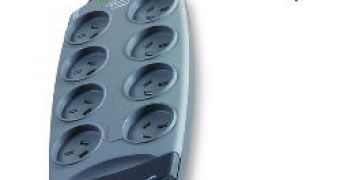As its name says, a surge protector is a device specially designed to protect electric and electronic equipment against surges. An electrical surge is a phenomenon during which the voltage of the electrical current supplied by the outlet greatly exceeds the standard voltage. In the United States, the standard voltage is 110 volts, while in most European countries the standard outlet voltage averages 220 volts. The problem with electrical surges is that they can easily damage electrical and electronic devices if it reaches a certain voltage over a long enough period of time.
To protect these appliances from serious damage, surge protectors are used and most of them come in the form of devices with multiple outlets that supply electric current to a various range of equipment. This practically means that the surge protector is placed between the normal outlet and the powered device.
When a power surge is detected, the protector limits the voltage of the current to the outlets to the standard voltage and diverts the extra power to the grounding wire where it is dissipated. The most common types of surge protectors use metal oxide varistors to limit and divert the extra power. A metal oxide varistor is a solid state device that varies its electrical resistance according to the voltage applied between its two terminals.
In surge protectors, MOVs are placed between the hot wire and the ground wire. After the voltage surplus is diverted away from the hot wire, the MOVs return to the ordinary electrical resistance.
Another type of surge protection devices uses gas discharge arrestors to dissipate the extra power. Basically, gas discharge arrestors work much in the same way as MOVs, but their design is somehow different. A gas discharge arrestor is a device containing two electrodes separated by a mass of inert gas. Inert gases are not very good at conducting electrical current, having a high electrical resistance, albeit when reaching a certain voltage the gas becomes ionized and starts behaving like a conductor.
Again, the voltage surplus is allowed to leak to the ground wire until the voltage at the outlet returns to standard.
As you can see, both the MOV and gas discharge arrestors function inside surge protectors in parallel configurations. Series circuits usually make use of toroidal choke coils to suppress the extra amount of power, thus instead of injecting it into the ground wire, surge protectors using toroidal coils regulate the current flow to prevent eventual damage to the devices it powers.

 14 DAY TRIAL //
14 DAY TRIAL //